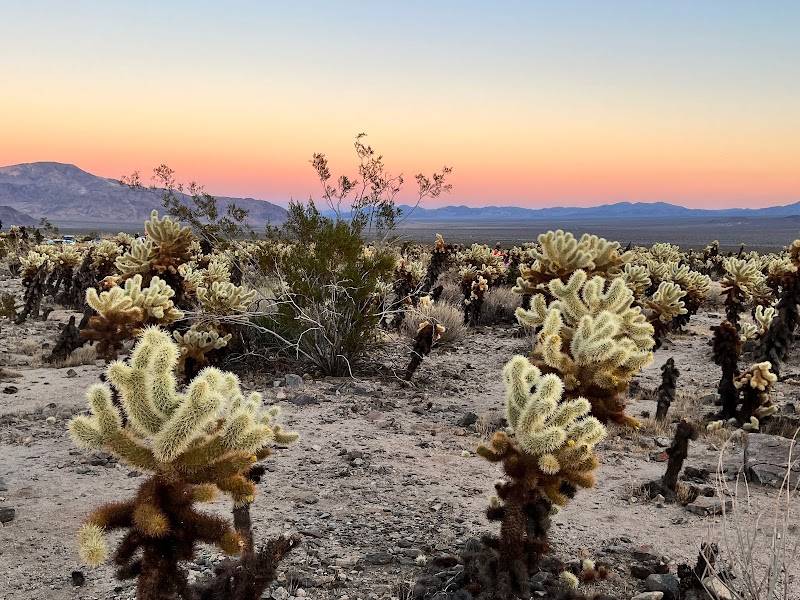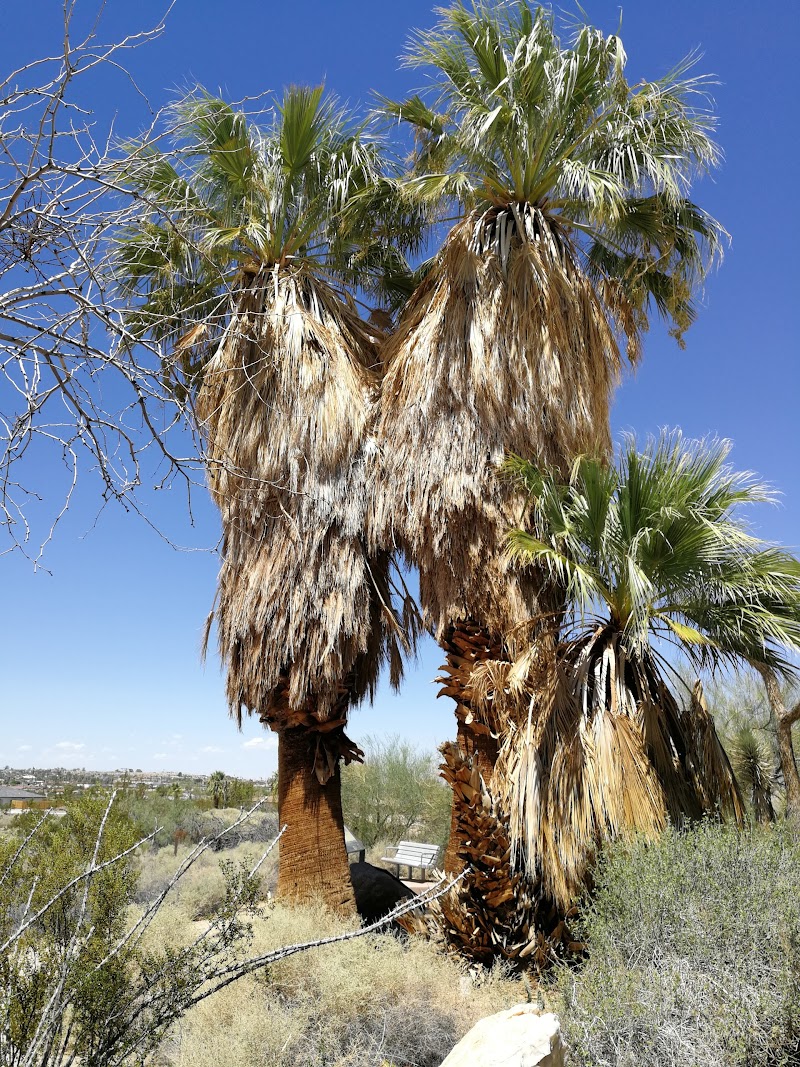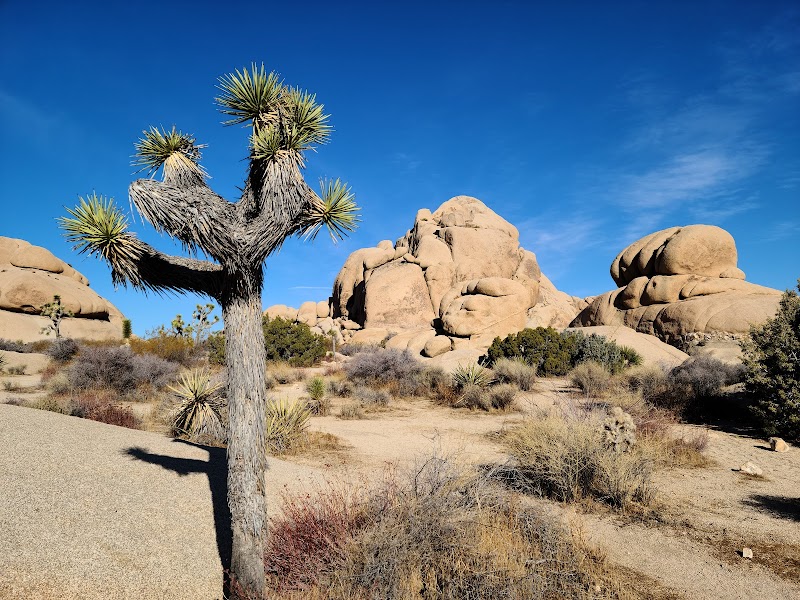Explore the Magic of Joshua Tree National Park
Did you know that the awe-inspiring Joshua Tree National Park spans over 790,000 acres, making it larger than the state of Rhode Island? This vast wilderness harmonizes two unique desert ecosystems, the Mojave and the Colorado, under a sky filled with the park's trademark Joshua Trees. The park's attractions, such as the mystical Cholla Cactus Garden and the panoramic Keys View, contribute to a stunning meld of natural beauty and captivating geological amazements.
To begin your adventure, grab a detailed tourist map. This vital resource will guide you through the mesmerizing landscapes, helping you plot your exploration. With accurate markings and plentiful information, this map ensures you don't miss any attraction in Joshua Tree.
Booking.comDiscover the Wonders of Joshua Tree National Park
Embarking on your journey through Joshua Tree National Park, you'll uncover a plethora of fascinating attractions. From peculiar rock formations to historical sites, each landmark provides a fascinating insight into the park's multi-dimensional charm. Don't miss these highlights: Skull Rock, Hidden Valley, Barker Dam, Lost Horse Mine, Keys Ranch, Arch Rock, and the Joshua Tree Visitor Center. To enhance your desert adventure, explore the majestic sights of the Zion National Park.
Unveiling the Secrets of Skull Rock
Skull Rock may look like an ordinary boulder at first glance, but upon closer inspection, its uncanny resemblance to a human skull becomes noticeable. This unique rock formation, shaped by years of erosion, is conveniently located next to the main road, making it an accessible first stop in your park tour. The Jumbo Rocks campground, perfect for setting up your basecamp, is just a stone's throw away from Skull Rock.
Hidden Valley: A Haven for Rock Climbing Enthusiasts
Next, head over to Hidden Valley, a secluded gem encircled by towering rocks, an ideal playground for rock climbing enthusiasts. Local lore suggests this area was once a hideout for cattle rustlers. As you traverse its trails, you'll soon see why it is aptly named "Hidden Valley". Nearby is Barker Dam, another must-visit site, just a short jaunt away.
The Historic Barker Dam
Built over a hundred years ago by cattle ranchers, Barker Dam serves as a monument to the park's rich history. But it's not just a historical landmark, it's also a vital water source for the park's diverse wildlife. If you're lucky, you might even spot some bighorn sheep or coyotes roaming around. Don't forget to check out the nearby Wall Street Mill, an impeccably preserved gold processing mill from the late 1800s.
Lost Horse Mine: A Glimpse into the Past
Immerse yourself in the park's mining history by visiting the Lost Horse Mine, one of the most prosperous gold mines of the late 19th and early 20th centuries. The 4-mile round trip hike to the mine offers a rewarding experience, presenting panoramic views of the park's diverse landscapes. Extend your exploration by visiting Yosemite National Park, another jewel in the American National Parks system.
The Rustic Keys Ranch
Managed by the Keys family for over six decades, Keys Ranch offers an intimate glimpse into the life of early settlers in the area. Each element of the ranch, from the old schoolhouse to the orchard, tells a gripping tale. While you're there, make sure to explore the nearby Desert Queen Mine, a relic from the park's mining era.
Arch Rock: A Natural Marvel
Arch Rock, a stunning natural arch, stands as a symbol of the park's unique geology. This impressive formation, crafted by weathering and erosion, embodies the ever-evolving desert landscape. To better understand the area's tourist potential and plan your journey optimally, consider using a tourist map of the United States.
Start Your Adventure at the Joshua Tree Visitor Center
Begin your exploration of Joshua Tree National Park at the Joshua Tree Visitor Center. Here, you can learn about the park's ecology, wildlife, and history through educational exhibits and knowledgeable staff. They can also provide recommendations on how to maximize your park experience, ensuring you leave no stone unturned during your visit.

Practical Information for Joshua Tree National Park
Transportation and Mobility
Exploring Joshua Tree National Park requires some planning. Driving is the most practical option due to the park's vastness and remote location. The park’s roads are well-maintained and suitable for all vehicles, but some dirt roads may require a four-wheel drive. Car rentals are readily available in nearby cities such as Palm Springs, Indio, or Twentynine Palms.
Schedules and Prices
Joshua Tree National Park is open all year round, 24 hours a day, offering you the flexibility to plan your visit at your convenience. However, the visitor centers and campgrounds follow specific schedules. The Joshua Tree Visitor Center operates daily from 8 am to 5 pm. Campgrounds have varying schedules and require reservations during the peak season from October to May. The entrance fee is $30 per vehicle, $25 per motorcycle, or $15 per individual on foot or bicycle. An annual pass is available for $55.
Safety Tips
Your safety is paramount when exploring Joshua Tree National Park. Carry plenty of water, as the desert climate can be deceptively arid and hot, potentially leading to dehydration. Always stick to designated trails to protect the environment and prevent getting lost. Cell service is limited, so plan your route and inform someone about your plans before setting off. Lastly, remember that wildlife is protected; always observe from a safe distance and refrain from feeding the animals.
Practical Recommendations
When planning your visit to Joshua Tree National Park, consider the season, as the park experiences significant temperature fluctuations. Summer can be extremely hot, with temperatures reaching over 100 degrees Fahrenheit, while winter nights can drop below freezing. The most comfortable times to visit are spring and fall, when the temperatures are moderate, and the park's flora is in full bloom. Don't forget to pack your sunscreen, hats, and comfortable walking shoes!

Frequently Asked Questions
1. Can I bring my pet to Joshua Tree National Park?
Yes, pets are allowed in Joshua Tree National Park, but their activities are significantly restricted to protect the park's unique ecosystem. Pets must be leashed at all times, and they're only allowed on roads, in campgrounds, and other developed areas. They're not permitted on any of the park's trails or in the backcountry.
2. Are there any guided tours available in the park?
Joshua Tree National Park offers a variety of ranger-led programs to enhance your visit. These include nature walks, informative talks on various topics, and night sky programs. However, these programs' availability can vary seasonally, so it's best to visit the official park website for the most current information.
3. What kind of wildlife can I expect to see in the park?
Joshua Tree National Park is home to a diverse range of wildlife, including coyotes, bobcats, bighorn sheep, and numerous bird species. Remember, it's crucial to observe all wildlife from a safe distance and not to feed any animals you encounter. Feeding wildlife disrupts their natural behavior and can harm their health.
4. Is there any special equipment I need to bring for hiking in Joshua Tree National Park?
Being prepared is key when planning a hike in Joshua Tree National Park. In addition to ample water and sun protection, it's advisable to bring a topographic map, compass, and if possible, a GPS device. A first-aid kit and awareness of your physical limitations can prevent overexertion in the desert heat.
5. Are there any special events or festivals in or around Joshua Tree National Park?
Joshua Tree National Park and the surrounding areas host a variety of events throughout the year. These include music festivals, art exhibitions, and cultural celebrations. For updated information on local events during your visit, refer to local event listings or the official park website.
6. Can I rock climb in Joshua Tree National Park?
Joshua Tree National Park is a renowned global hotspot for rock climbing, boasting over 8,000 climbing routes. Note that climbing is not allowed on specific cultural sites within the park, and care should be taken to minimize impact on the park's unique environment. Always refer to the park's climbing guidelines before your visit. For an extended climbing adventure, consider a trip to the Canyonlands National Park.

